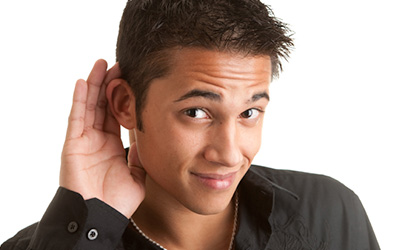



When it comes to getting the most out of lectures, effective listening is a crucial skill to have. But when else do you need to be opening your ears?
A recent Student Health 101 survey indicates that 50 percent of students just want to be listened to during times of distress. Sometimes what people need most is the opportunity to talk. So how can you demonstrate that you’re really hearing what other people say?
Active listening refers to the goal of truly understanding what someone says. Facilitating a conversation where the speaker feels heard is a crucial part of good communication. “Sometimes people are just waiting for their turns to speak,” says James D., a junior at Temple University in Philadelphia, Pennsylvania. “It feels like what you’re saying is just going in one ear and out the other.”
Dean M., a student at University of Ontario Institute of Technology in Canada, suggests, “If you care about someone, show it.” Here are some basic techniques:
In the recent Student Health 101 survey, 22 percent of respondents ranked eye contact as the most important part of a conversation. Sarah R., a senior at Colorado State University in Fort Collins, says, “I look directly at the person I’m talking to so he or she knows I’m paying attention.”
Professor Rex Campbell’s Leadership: Getting It Done, a manual for the University of Missouri in Columbia, suggests using the following body language:
Do you know how to read body language and facial expressions? Take a quiz.
You can practice this skill and achieve academic results at the same time.
Effective communication combines welcoming body language with active listening skills. Practicing these helps ensure that not only do the people you speak with feel heard, but also that you get the most from conversations.
Heidi is a senior studying psychology at the University of Guelph.
Nonverbal Encouragement |
Purpose
Examples
|
Clarification |
Purpose
Examples
|
Paraphrasing |
Purpose
Examples
|
Summarizing |
Purpose
Examples
|




